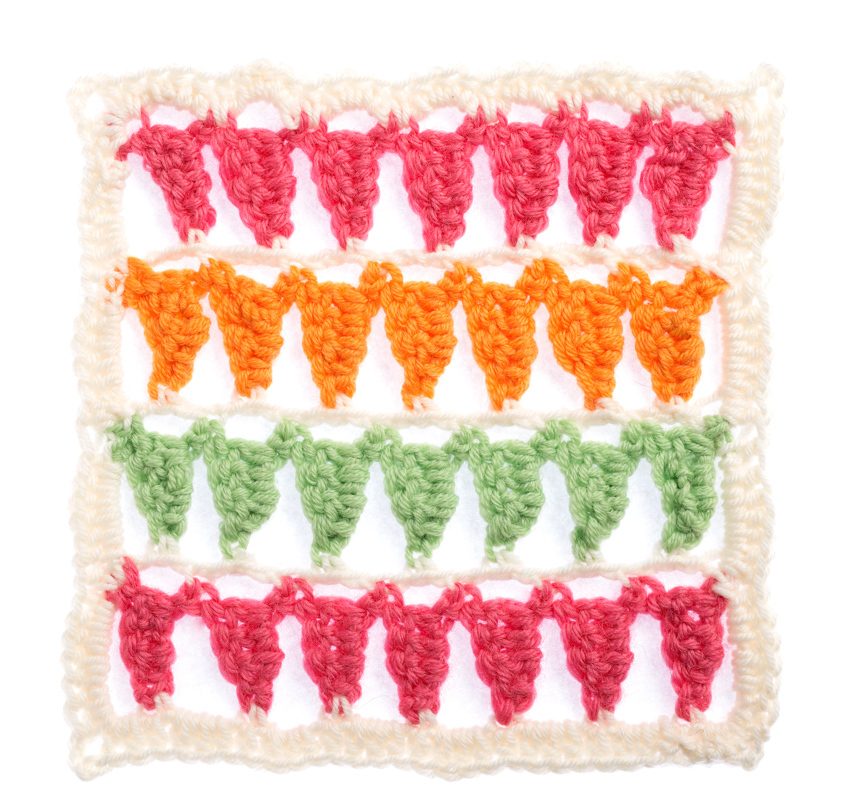Thankfully, it’s not all 3D glasses, cybersex and hashtags galore these days – there’s been a remarkable resurgence over the last few years in traditional arts and crafts, textiles and needlework. In an increasingly disposable, virtually-skewed world, there’s obviously something satisfyingly therapeutic about sitting down and creating tangible and lasting objects, and we’ve been inundated with work of late, shooting in the hobbyist realm. We had a clearly defined challenge on our hands when publishers Ivy Press asked us to photograph 365 individual crochet squares for textiles expert Tracey Lord’s book, A Square a Day. Those of you for whom teachers held out hope may have realised that’s one for every day of the year, but since we had far less time than that to shoot them all, a system was needed to get great results.
It’s imperative for your sanity with a project like this to plan a little in order to minimize both your shooting and editing schedule. Work out where the time is best spent to get the results you need – In front of the camera or the computer? Product photography is about taking care to achieve time-saving consistency and clean, crisp results and this starts with making the items look as presentable as possible before a single shutter is clicked. First we sprayed our occasionally-unruly crochet pieces with water, stretched and pinned the corners to a polystyrene board so that upon drying, we had nicely square products ready to be shot.
Our client wanted the final images to include a pure white backdrop and since convincingly cutting out “hairy” fabrics can leave you with very little of the stuff on your own head, we decided to backlight our subjects. Placed on tracing paper and glass above a light, then shot top-down and further lit from above with large, diffuse light, we achieved great exposures straight out of camera. It’s important for your editing workflow to blow out the backdrop, without going so far with the over-exposure as to lose edge fidelity or cause light bleed onto the item itself. Having shot and returned the lot to the client, all that remained was to crop, straighten and tidy the images where necessary, using liquify and warp tools in photoshop to amend any unsightly fabric stretching that the pins in the corners may have caused.
Needless to say the kettle went on a few times while individually processing 365 shots of fabric but every time it got a bit much sitting in front of the mac, we took an hour out, picked up needle and thread and found our happy place… #CheckOutMyNewScarf #It’sSummerWhyHaveIKnittedaScarf?

